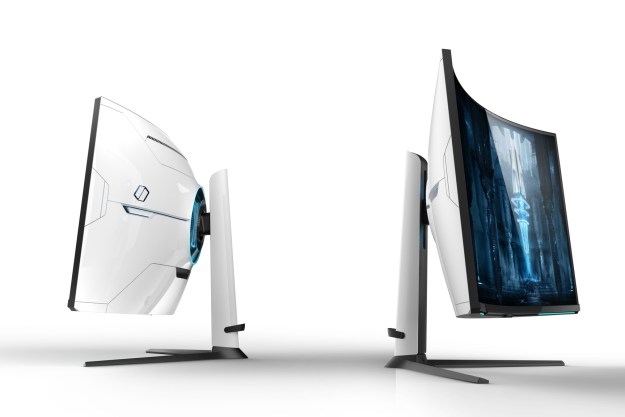Debuted at Samsung’s First Look event ahead of CES 2018, the new HW-N650 soundbar looks a lot like its predecessors at the onset, but zooming in a bit closer reveals an intriguing design, not the least of which is a hard-angled backside that looks almost like a fin. As you would imagine, though, it’s what’s beneath the surface that really makes this soundbar special. Underneath the soundbar’s top face is a small, tube-like sound port flanked by dual tweeters on its sides and lined with small ports, which the company calls a “hole array.”
Samsung’s VP of Digital Audio and Video, Jim Kiczek, likens the hole array design to the finger holes that change the intonation of a flute. But instead of affecting the pitch, the HW-N650’s holes are designed to allow for “highly directional acoustic beams” to create a sweeping soundstage up front for a wall of sound. In theory, this will bring gamers closer to the action, helping you follow your character, other players, or NPCs and effects to pull you deeper into the game.
Samsung hopes this will offer one more reason to stop dealing with your paltry TV audio and put up some dough for a soundbar, while also allowing gamers to slip of the headphones without losing the accuracy they bring to the table. Of course, Kiczek says the soundbar is also designed to be an excellent ambassador of music, TV, and film sound, and its accompanying wireless subwoofer pumped out plenty of raucous bass in the demonstration at the show, presenting a powerful sonic experience.
We don’t yet have pricing for the HW-N650 soundbar, but it’s expected to be released in the spring of 2018. We’ll likely be bringing it in for review as soon as it hits the open market, so stay tuned for more.
Editors' Recommendations
- Samsung launches its flagship Dolby Atmos soundbar with discounted prices
- Samsung’s flagship HW-Q990D Dolby Atmos soundbar gets Roon support
- Sony’s premium soundbars will finally get support for VRR, ALLM
- Samsung releases its 2022 soundbars including an 11.1.4-channel flagship with wireless Dolby Atmos
- Samsung ARK is a rotating cockpit of monitor madness — and I want one now


